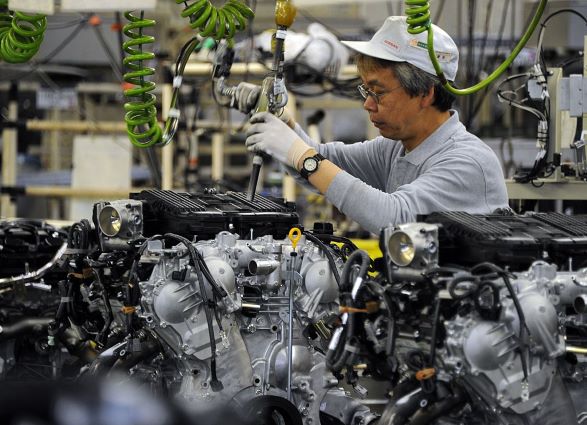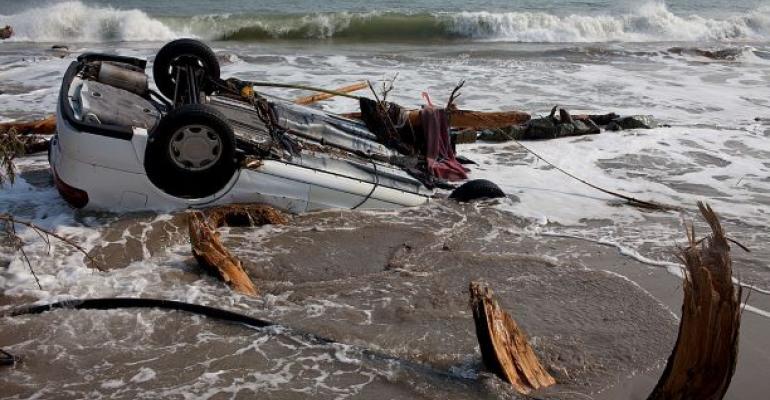First of two parts
Ten years ago on March 11, Japan was hit by the worst natural disaster in the country’s history – a 9.0-magnitude earthquake 80 miles (129 km) off the northeastern coast of the main Honshu island, followed by a killer tsunami with waves, some reaching more than 100 ft. (30 m) high, destroying everything in their path and triggering a meltdown of three nuclear reactors in Fukushima.
The final death toll came to nearly 16,000. The Brookings Institution estimated that Japan incurred more than $350 billion in economic losses.
The Japanese auto industry saw some 500 suppliers’ and a handful of OEMs’ production facilities incur serious damage, forcing much of the industry to shut down operations for nearly a month.
Analysts had predicted the industry would not be fully up and running for six months. But the nation’s automakers were operating at more than 80% of pre-quake levels by June.
It was one of the finest hours for the Japanese industry, showing its mastery of manufacturing from vehicle assembly deep down into the supply chain.
But it also exposed the industry to the need for further investment in overseas production, continuing a long-term trend dating back to the bursting of Japan’s economic bubble at the start of the 1990s.
Japanese domestic production of cars, trucks and buses peaked at 13.2 million units in 1991. The total represented 80% of Japanese manufacturers’ global output. By 2020, Japan’s share had fallen to 34% as output crashed to 8.1 million, a 25-year low, excluding 2009, the year of the great recession. Granted, COVID-19 affected 2020 demand, although the long-term trend has been downward.
No risk scenario could have foreseen a deadly earthquake and tsunami knocking out 15 medium-sized ports and dozens of materials-manufacturing plants along a 350-mile (564-km) span of Japan’s northeastern coast.
Hardest hit was the chemical sector, particularly the scores of large petroleum-refining and chemical-processing operations in port areas from Sendai to Kashima.
Workers resume assembling VQ V-6 engines at Nissan’s Iwaki plant on May 17, 2011, just over two months after earthquake and tsunami struck Japan.
In Kashima, located 55 miles (89 km) east of Tokyo, 16-ft. (5-m) waves halted the operations of at least 10 suppliers of resins, intermediates and specialty chemicals inside the port complex.
The impact on the automotive supply chain was most severe at Mitsubishi Chemical Corp., which lost two 400,000-ton ethylene plants, accounting for nearly 10% of Japan’s ethylene capacity, for nearly 10 weeks.
Because of the scale of Mitsubishi Chemical’s Kashima operation, producing the base materials for literally dozens of automotive components, analysts had feared the worst – that plastics, synthetic rubber and various coatings might be the ultimate bottleneck in the supply chain. However, alternative sources were found.
There was a serious problem with a specialty paint pigment produced at the Merck Group’s Iwaki plant. Located 36 miles (58 km) south of the damaged Fukushima power station, the plant was the sole source of Xirallic, which is used in pearl luster paints for Volkswagen, BMW, Ford and Toyota. The plant was shut down until early May. Merck began producing the pigment in 2012 at its headquarters plant in Darmstadt, Germany.
The biggest bottleneck was a manufacturer of microcontrollers, Renesas Electronics Corp. The supplier’s Hitachinaka plant in Ibaraki prefecture suffered extensive damage to trunk cables, vinyl chloride exhaust pipes and clean room.
As a result, automakers around the world, not just in Japan, experienced disruptions in their operations as Renesas microcontrollers – the supplier held more than 40% share of the global market – were unable to find replacements for such applications as airbags, body control modules, braking, steering and vehicle stability systems and engine controls.
After initially assessing the scale of the damage, Japanese automotive and electronics manufacturers sent in an army of 2,500 engineers who worked around the clock with Renesas employees for nearly a month to restore the damaged production line.
By April 25, the plant’s 8-in. (200-mm) and 12-in. (300-mm) wafer lines resumed trial production. By June 6, mass production got under way. Shipments to customers resumed in August.
Concurrently, the supplier moved to certify other plants both in Japan and overseas to meet customer requirements. Its customers included Toyota, Nissan and Honda in Japan and General Motors and Ford overseas.
“In the end,” said Toyota executive vice president Takeshi Uchiyamada, who is currently Toyota’s chairman, “electronics was our biggest problem.”
As a result of the quicker-than-expected recovery, the negative impact on earnings was considerably below initial forecasts. In fact, every Japanese automaker returned to profitability in the second half of the 2011 fiscal year, from September 2011 to March 2012.





